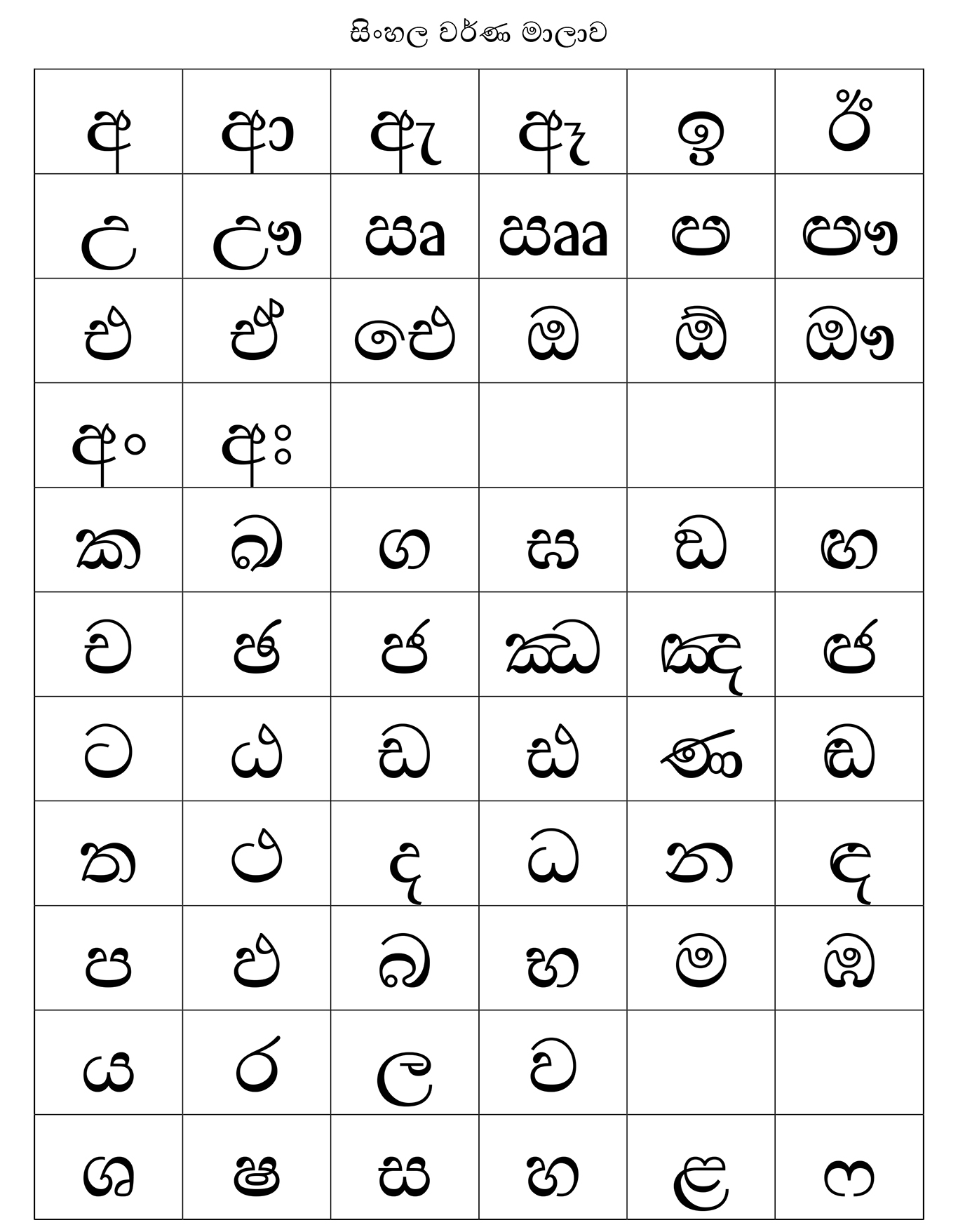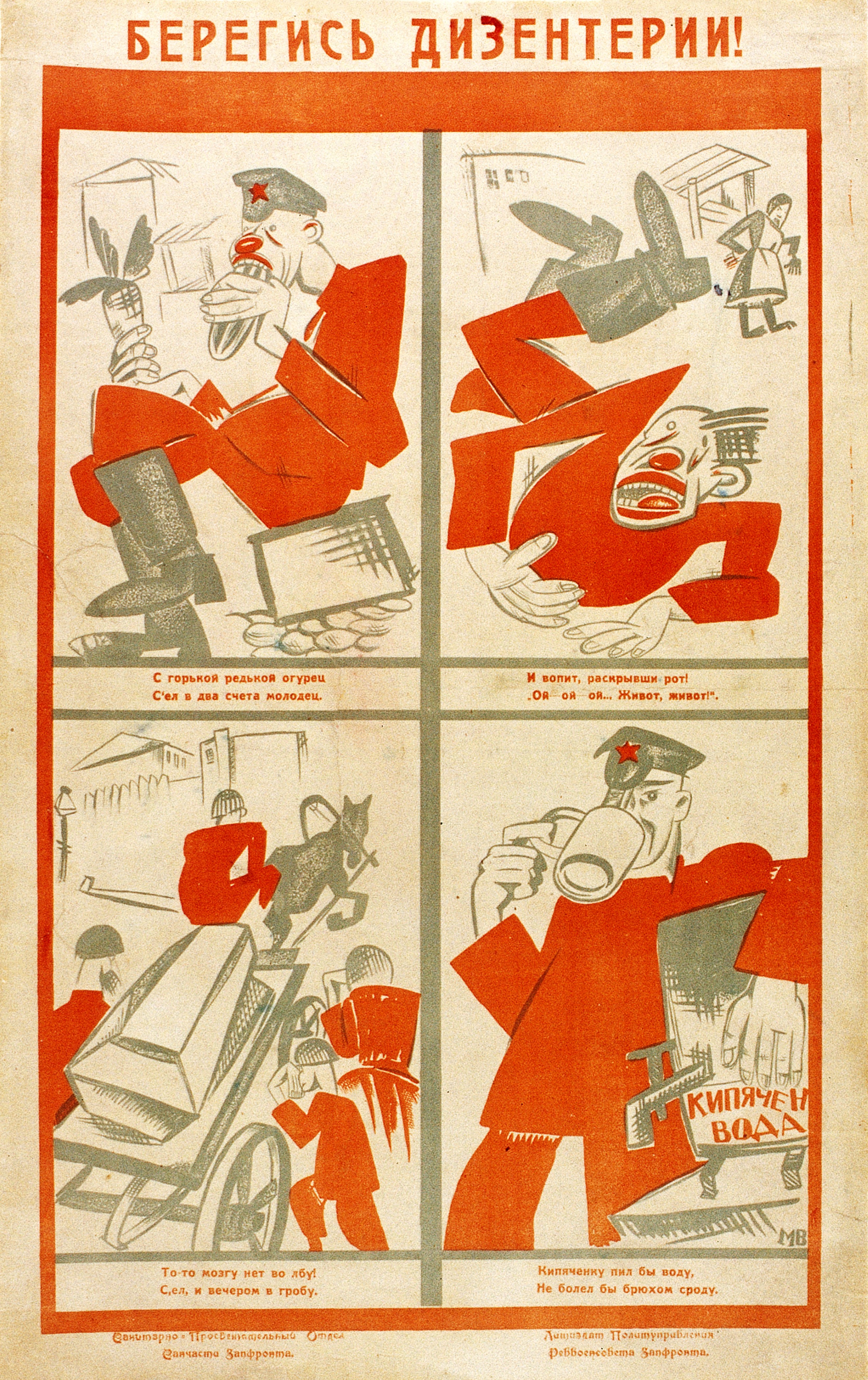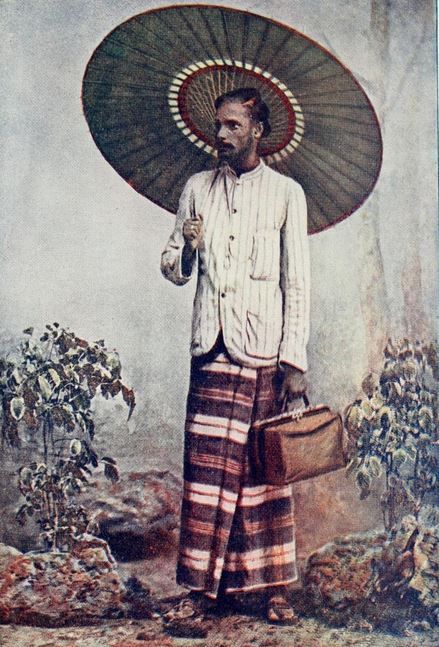|
Maha Sohona
Maha Sona or Maha Sohona ( Sinhala: මහ සෝනා, මහ සොහොනා) is a ''yaka'' (or ''yakseya'' or ''devaya'', meaning demon) in Sinhalese folklore, who is said to haunt afterlife. The name Maha Sona means " the greatest demon" or "god or demon of the cemetery" in the Sinhala language. It is the most feared god or demon in Sri Lanka. Originally a giant who had been defeated and decapitated in a duel by another giant named Gotaimbara (lived in the 1st century BC), Maha Sonaa has had his head replaced with that of a bear or tiger. He is believed to kill people by crushing their shoulders and also by afflicting illnesses. Traditional exorcism rituals are performed to repel the demon in such cases. Sri Lanka Army's Long Range Reconnaissance Patrol units are popularly known as the "Maha Sohon Brigade", named after this demon. Origins In local folk traditions Maha Sona is formerly a human known as Ritigala Jayasena (Jayasena of Ritigala), a fierce warrior living aroun ... [...More Info...] [...Related Items...] OR: [Wikipedia] [Google] [Baidu] |
Sinhala Language
Sinhala ( ; , ''siṁhala'', ), sometimes called Sinhalese (), is an Indo-Aryan language primarily spoken by the Sinhalese people of Sri Lanka, who make up the largest ethnic group on the island, numbering about 16 million. Sinhala is also spoken as the first language by other ethnic groups in Sri Lanka, totalling about 2 million people as of 2001. It is written using the Sinhala script, which is a Brahmic script closely related to the Grantha script of South India. Sinhala is one of the official and national languages of Sri Lanka. Along with Pali, it played a major role in the development of Theravada Buddhist literature. The early form of the Sinhala language, is attested as early as the 3rd century BCE. The language of these inscriptions with long vowels and aspirated consonants is a Prakrit similar to Magadhi, a regional associate of the Middle Indian Prakrits that has been used during the time of the Buddha. The closest relatives are the Vedda language (an endange ... [...More Info...] [...Related Items...] OR: [Wikipedia] [Google] [Baidu] |
Dysentery
Dysentery (UK pronunciation: , US: ), historically known as the bloody flux, is a type of gastroenteritis that results in bloody diarrhea. Other symptoms may include fever, abdominal pain, and a feeling of incomplete defecation. Complications may include dehydration. The cause of dysentery is usually the bacteria from genus '' Shigella'', in which case it is known as shigellosis, or the amoeba '' Entamoeba histolytica''; then it is called amoebiasis. Other causes may include certain chemicals, other bacteria, other protozoa, or parasitic worms. It may spread between people. Risk factors include contamination of food and water with feces due to poor sanitation. The underlying mechanism involves inflammation of the intestine, especially of the colon. Efforts to prevent dysentery include hand washing and food safety measures while traveling in areas of high risk. While the condition generally resolves on its own within a week, drinking sufficient fluids such as oral ... [...More Info...] [...Related Items...] OR: [Wikipedia] [Google] [Baidu] |
Paritta
Paritta (Pali), generally translated as "protection" or "safeguard," refers to the Buddhist practice of reciting certain verses and scriptures in order to ward off misfortune or danger, as well as to the specific verses and discourses recited as paritta texts. The practice of reciting or listening to the paritta suttas began very early in the history of Buddhism. Uses In the Pali literature, these short verses are recommended by the Buddha as providing protection from certain afflictions. The belief in the effective power to heal, or protect, of the '' sacca-kiriya'', or asseveration of something quite true is an aspect of the work ascribed to the ''paritta''. It is also widely believed that all-night recitations of paritta by monks bring safety, peace and well-being to a community. Such recitations will also occur on auspicious occasions, such as the inauguration of a new temple or home or to provide blessings upon those who hear. Conversely, paritta discourses are recited ... [...More Info...] [...Related Items...] OR: [Wikipedia] [Google] [Baidu] |
Sacca-kiriyā
Sacca-kiriyā (Pāli; sa, satya-kriya, italic=yes, but more often: ''satyādhiṣṭhāna'')'' or '' sa, satyavādya''; '' pi, saccavacana'' or '' sa, satyavacana''; ''satyopavācana'', ''satyarākya'', ''satyavākya'', ''satyavacas'' or ''satyasrāvaṇā''; or simply '' pi, sacca'' or '' sa, satya''. is a solemn declaration of truth, expressed in ritual speech. Most often found in Buddhism, it can be an utterance with regard to one's own virtue, or with regard to a certain fact, followed by a command or resolution. Such a statement is believed to effect a wonder-working power that can benefit oneself and others, depending on the truthfulness of the person making the statement. The ''sacca-kiriyā'' is a motif found in the scriptural stories from the Pāli Canon and its commentaries, as well as in post-canonical works such as the Milindapañhā and the Avadānas. In these stories it is found usually as a blessing, but sometimes as a curse. The motif can also be found in Hin ... [...More Info...] [...Related Items...] OR: [Wikipedia] [Google] [Baidu] |
2004 Indian Ocean Earthquake And Tsunami
The 2004 Indian Ocean earthquake and tsunami (also known as the Boxing Day Tsunami and, by the scientific community, the Sumatra–Andaman earthquake) occurred at 07:58:53 local time ( UTC+7) on 26 December, with an epicentre off the west coast of northern Sumatra, Indonesia. It was an undersea megathrust earthquake that registered a magnitude of 9.1–9.3 , reaching a Mercalli intensity up to IX in certain areas. The earthquake was caused by a rupture along the fault between the Burma Plate and the Indian Plate. A series of massive tsunami waves grew up to high once heading inland, after being created by the underwater seismic activity offshore. Communities along the surrounding coasts of the Indian Ocean were devastated, and the tsunamis killed an estimated 227,898 people in 14 countries, making it one of the deadliest natural disasters in recorded history. The direct results caused major disruptions to living conditions and commerce in coastal provinces of surround ... [...More Info...] [...Related Items...] OR: [Wikipedia] [Google] [Baidu] |
Galle District
Galle ( si, ගාල්ල දිස්ත්රික්කය ''gālla distrikkaya''; ta, காலி மாவட்டம் ''Kāli māvattam'') is a district in Southern Province, Sri Lanka. It is one of 25 districts of Sri Lanka, the second level administrative division of the country. The district is administered by a District Secretariat headed by a District Secretary (previously known as a Government Agent) appointed by the central government of Sri Lanka. Geological background Its area is : is water and is land. Galle District bounded on the north by Benthara river, south and west by the Indian Ocean and east by Matara and Ratnapura districts. The topography of Galle District is very much dissent. The climatic condition of Hiniduma Patthuwa is very similar to the central hill country of Sri Lanka. This area consists of rainforests, which is the water catchment area for most of the rivers and lakes flows across Galle District. Sinharaja Forest Reserve is o ... [...More Info...] [...Related Items...] OR: [Wikipedia] [Google] [Baidu] |
Exorcism
Exorcism () is the religious or spiritual practice of evicting demons, jinns, or other malevolent spiritual entities from a person, or an area, that is believed to be possessed. Depending on the spiritual beliefs of the exorcist, this may be done by causing the entity to swear an oath, performing an elaborate ritual, or simply by commanding it to depart in the name of a higher power. The practice is ancient and part of the belief system of many cultures and religions. Buddhism The practice of reciting or listening to the Paritta began very early in the history of Buddhism. It is a Buddhist practice of reciting certain verses and scriptures from Pali Canon in order to ward off misfortune or danger. The belief in the effective spiritual power to heal, or protect, of the '' Sacca-kiriyā'', or asseveration of something quite true is an aspect of the work ascribed to the ''paritta''. Several scriptures in the Paritta like Metta Sutta, Dhajagga Sutta, or Ratana Sutta can be re ... [...More Info...] [...Related Items...] OR: [Wikipedia] [Google] [Baidu] |
Pike (weapon)
A pike is a very long thrusting spear formerly used in European warfare from the Late Middle Ages and most of the Early Modern Period, and were wielded by foot soldiers deployed in pike square formation, until it was largely replaced by bayonet-equipped muskets. The pike was particularly well-known as the primary weapon of Swiss mercenary and German Landsknecht units. A similar weapon, the sarissa, had been used in antiquity by Alexander the Great's Macedonian phalanx infantry. Design The pike was a long weapon, varying considerably in size, from long. Generally, a spear becomes a pike when it is too long to be wielded with one hand in combat. It was approximately in weight, with the 16th century military writer Sir John Smythe recommending lighter rather than heavier pikes. It had a wooden shaft with an iron or steel spearhead affixed. The shaft near the head was often reinforced with metal strips called "cheeks" or langets. When the troops of opposing armies both ... [...More Info...] [...Related Items...] OR: [Wikipedia] [Google] [Baidu] |
Cholera
Cholera is an infection of the small intestine by some strains of the bacterium '' Vibrio cholerae''. Symptoms may range from none, to mild, to severe. The classic symptom is large amounts of watery diarrhea that lasts a few days. Vomiting and muscle cramps may also occur. Diarrhea can be so severe that it leads within hours to severe dehydration and electrolyte imbalance. This may result in sunken eyes, cold skin, decreased skin elasticity, and wrinkling of the hands and feet. Dehydration can cause the skin to turn bluish. Symptoms start two hours to five days after exposure. Cholera is caused by a number of types of ''Vibrio cholerae'', with some types producing more severe disease than others. It is spread mostly by unsafe water and unsafe food that has been contaminated with human feces containing the bacteria. Undercooked shellfish is a common source. Humans are the only known host for the bacteria. Risk factors for the disease include poor sanitation, not enou ... [...More Info...] [...Related Items...] OR: [Wikipedia] [Google] [Baidu] |
Sinhalese People
Sinhalese people ( si, සිංහල ජනතාව, Sinhala Janathāva) are an Indo-Aryan ethnolinguistic group native to the island of Sri Lanka. They were historically known as Hela people ( si, හෙළ). They constitute about 75% of the Sri Lankan population and number more than 16.2 million. The Sinhalese identity is based on language, cultural heritage and nationality. The Sinhalese people speak Sinhala, an insular Indo-Aryan language, and are predominantly Theravada Buddhists, although a minority of Sinhalese follow branches of Christianity and other religions. Since 1815, they were broadly divided into two respective groups: The 'Up-country Sinhalese' in the central mountainous regions, and the 'Low-country Sinhalese' in the coastal regions; although both groups speak the same language, they are distinguished as they observe different cultural customs. According to the Mahavamsa and the Dipavamsa, a third–fifth century treatise written in Pali ... [...More Info...] [...Related Items...] OR: [Wikipedia] [Google] [Baidu] |
Ten Giant Warriors
Much is written of the war of 205 BC to 161 BC between Sinhala King Dutugemunu and Ellalan for the city of Anuradhapura, and the central role played by Dutugemunu's Ten Giant Warriors or Ten Great Giants ( si, දසමහා යෝධයෝ, daśamaha yôdoyo). According to the chronicle Mahavamsa the men were drafted into Royal service during the reign of Dutugemunu's father, King Kavantissa. The Rajavaliya asserts that the ten warriors had remained impartial throughout Dutugemunu's battles with his younger brother Tissa, as they had promised King Kavantissa that they would remain impartial in the event of a dispute between the two brothers. At the decisive battle between the two kings at Vijithapura, Nandhimitra and Nirmalaya (Suranimala) are said to have fought to secure the south gate to the city. Mahasona (sena), Gothaimbara and Theraputtabhya are said to have secured the east gate, while the remaining champions fought for the north and west gates. Nandhimithra Nandhimi ... [...More Info...] [...Related Items...] OR: [Wikipedia] [Google] [Baidu] |
Dutugamunu
Dutugamunu the Great (, , also spelled as ''Dutthagamani''), also known as Dutthagamani Abhaya ("fearless Gamini"), was the greatest king of the Anuradhapura Kingdom who reigned from 161 BC to 137 BC. He is renowned for reuniting the whole island of Sri Lanka by defeating and overthrowing Elara, the usurping Tamil prince from the Chola Kingdom, who had invaded the Anuradhapura kingdom in 205 BC. Dutugamunu also expanded and beautified the city of Anuradhapura and projected the power of his native Rajarata region across the island of Sri Lanka. Due to his significance as one of the most potent symbols of Sinhalese historical power, Dutugamunu's story is swathed in myth and legend. However, many aspects of the accounts of his life have been verified by contemporary inscriptions, and the basic account of his life is generally accepted as accurate. Etymology The Mahavamsa describes how as a youth he mocked his father Kavantissa, king of Ruhuna, for refusing to wage war against ... [...More Info...] [...Related Items...] OR: [Wikipedia] [Google] [Baidu] |









